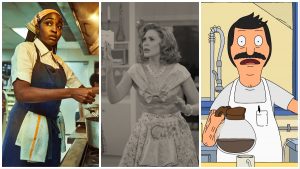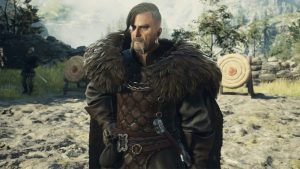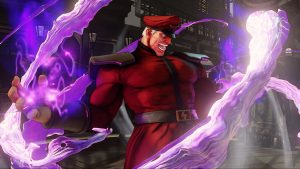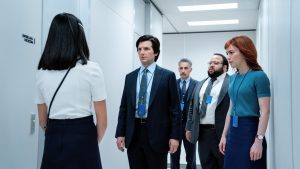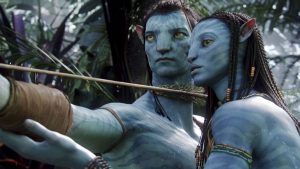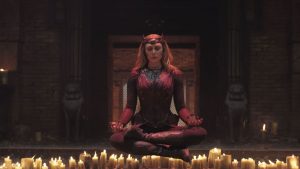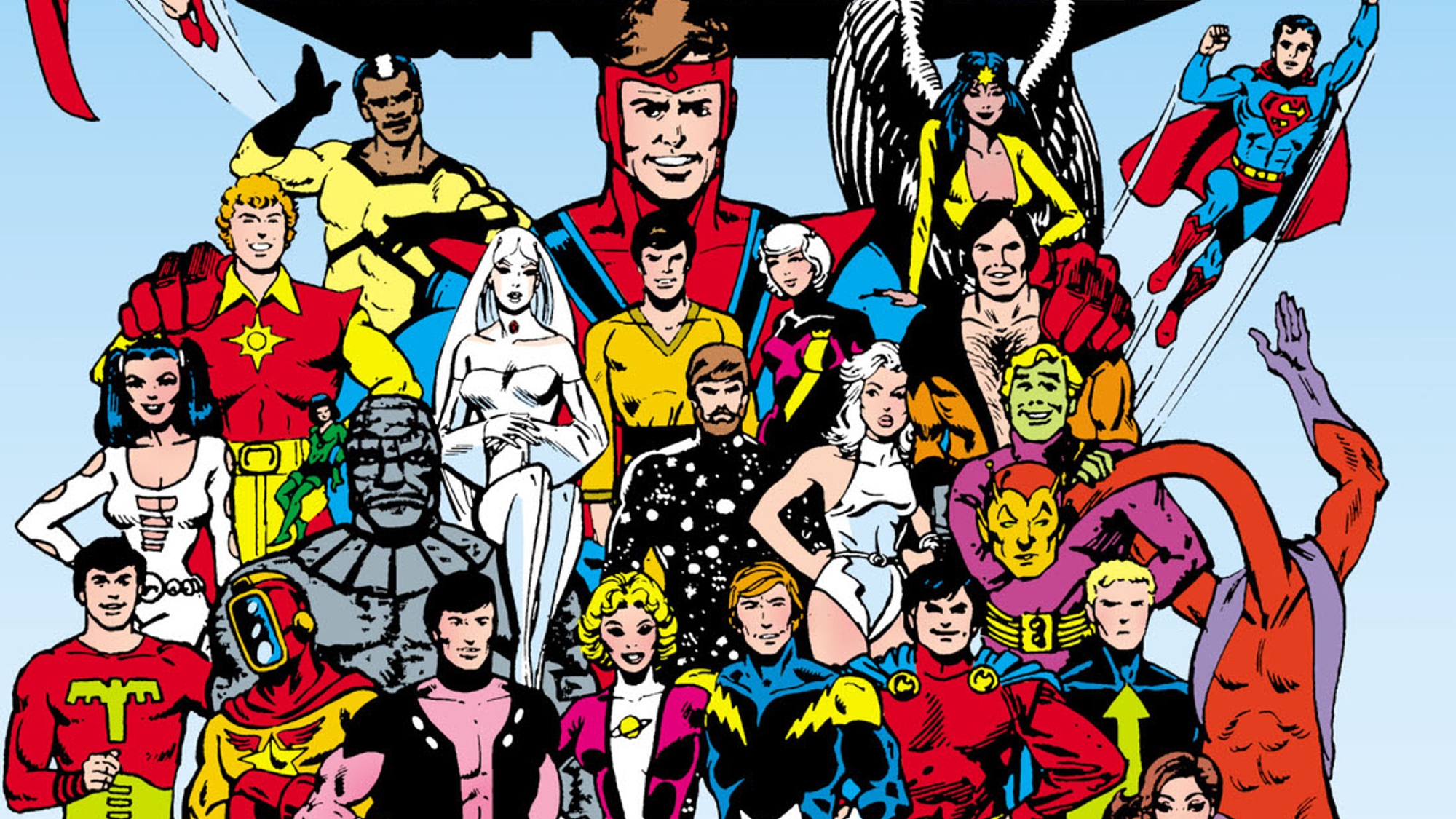
The Justice League. The Teen Titans. Heck, even the Outsiders. Most comic readers know these superhero teams from DC Comics, and can probably name at least a few key members, if not favorite stories.
But for a while in the 1980s, one team topped them all, rivaling even Chris Claremont’s X-Men run for comic shop supremacy: Legion of Super-Heroes won over readers with its futuristic space opera and its cast of unique characters.
The basic premise of the Legion of Super-Heroes is simple. 1000 years in the future, a group of superpowered teens take inspiration from Superboy and become heroes, most using powers they gained from their native planets. Like the best Superman stories, Legion tales tend to be optimistic and hopeful, certain that humanity can overcome its problems and work toward a better tomorrow.
But actually reading the Legion can be a bit daunting. Because of the future setting, Legion stories often take place away from current DC Comics events and don’t affect continuity in the same way. The team also has a massive line-up, sometimes with more than 25 members at one time. Most challenging of all, the Legion of Super-Heroes has been rebooted four and a half times (yes, half), which intimidates newcomers.
But don’t worry, we’re here to save the day! We’ll breakdown the major eras of the Legion and the stories that make them such a notable part of the DC universe.
The First Legion
The Legion of Super Heroes made their debut in 1958’s Adventure Comics #247, written by Otto Binder and penciled by Al Plastino. The story follows three teens from the future—Cosmic Boy, Lightning Lad, and Saturn Girl—who meet Superboy in Smallville and put him through a series of tests/good-hearted pranks.
The Legion proved an immediate hit among readers, who thrilled to see Superboy palling around with other young heroes. The Legion became a regular fixture in Adventure Comics, and its ranks soon began to fill out. New members included genius Brainiac 5, the size-changing Colossal Boy, and the phasing Phantom Girl, as well as those with more unusual powers: Bouncing Boy turned himself into a giant ball and clobbered baddies, while Matter-Eater-Lad has the ability to digest anything.
Many of the first Legion stories played out like that initial adventure, in which Legionnaires spent most of their time playing super-pranks on one another. The plots did grow redundant from time to time, but it fit the upbeat tone of a series featuring teens in an idyllic future.
But eventually, the tone grew more complex and rich. The Legion expels Star Boy for killing in self-defense in 1966’s Adventure Comics #342. Ferro Lad sacrificed himself to reignite the sun in Adventure Comics #352-353 (1967). In Superboy and the Legion of Super-Heroes #200 from 1974, Bouncing Boy and Duo Damsel (Triplicate Girl’s new codename after one of her duplicates dies) leave the team to get married.
The stories really kicked into gear once Paul Levitz and eventually Keith Giffen came on board. The team gets flashy new costume designs from Dave Cockrum, who soon leaves DC to help Marvel reboot the X-Men with Giant-Size X-Men #1, and dramatic new attitudes to go with them.
Standout tales from the era include The Great Darkness Saga, in which Darkseid reawakens in the 29th century, establishing the New God as the big bad of the DC Universe. An epic Legion of Super-Villains tale saw the Legion against all of their assembled enemies, building to a tragic conclusion. So popular was the team during this period in the 1980s that DC started publishing a second series with glossier, high-end material that could only be bought in comic book shops, one of the first direct market series.
In 1989, the book relaunched with a five-year gap, this time with Keith Giffen taking the lead on art and scripts, aided by Tom and Mary Bierbaum. The Five Years Later (FYL) Legion can be challenging for new readers, as Giffen is at his most abstract in art style and his scripts include unexplained references to deep series lore. Furthermore, the FYL stories have a darkness absent from most stories about the team, replacing the usual utopian setting with a dystopia and leaving the team scattered and scarred. However, it builds to a fantastic climax, which reaffirms the hopeful nature of the Legion of Super-Heroes.
But that wasn’t enough to save the Legion from Crisis on Infinite Earths, which wiped away the existence of the team’s inspiration Superboy. Editors tried a few, frankly confusing, workarounds to deal with the massive change to canon. But after Giffen left the book and the plots became less compelling, DC used its 1994 Zero Hour crossover event to reboot the Legion, the first of many resets.
The Archie Legion Gets Lost
After Zero Hour, the Legion restarted from scratch with a new origin and tone, under the direction of writers Mark Waid, Tom Peyer, and Tom McGraw, with art by Jeff Moy, Stuart Immonen, and Chris Sprouse. In some ways, the book sought to update the characters for modern readers, giving them uniforms with pouches and replacing the antiquated codenames with hipper versions. Lightning Lad became Live Wire. Shadow Lass became Umbra. Chameleon Boy just dropped the “Boy” because it’s cleaner.
At the same time, the Reboot Legion returned to the original concept, making the team a group of fun-loving teens adventuring in an optimistic future. In this new version of their origin, the team came together at the behest of wealthy businessman R.J. Brande, who wanted an interplanetary team to serve as a beacon for the United Planets.
Some fans rejected this version of the team and its cartoony origins, dubbing it “the Archie Legion” because of its occasional resemblance to Archie Andrews and the Riverdale gang. But this version carried two books throughout the ’90s, Legion of Super-Heroes and Legionnaires, and participated in major DC Comics events such as Final Night (which took inspiration from the Death of Ferro Lad storyline).
Those who hoped to one day see the end of the Archie Legion got their wish when Dan Abnett and Andy Landing took over scripting duties, with issues drawn by Olivier Coipel. The trio took the Legion on a much darker journey, raising the stakes by reviving immortal Batman villain Ra’s al Ghul and introducing the evil alien species known as the Blight, who feast on the life energy of planets.
The highlight of the Abnett and Lanning run came with Legion Lost, in which a small contingent of Legionnaires get stuck on the far side of the universe. As they fight to make their way back, the Lost Legionnaires deal with betrayals and a shocking reveal about the new big bad.
In 2004, in an effort to reorganize the company’s teen books and remedy the series’ flagging sales, DC kicked off another reboot of the Legion.
The Threeboot Legion Says Suck It Grandpa
Spearheaded by Mark Waid and Barry Kitson, the second reboot (dubbed the Threeboot Legion) alienated longtime fans right away. Waid and Kitson reimagined the Legion as a movement among adolescents who reject the stultifying restrictions of the adults of the future. Anyone can call themselves a Legionnaire, but only those chosen for their unique powers have Legion flight rings, making them official members.
As this description suggests, the Legion had a more adversarial attitude than its predecessors. Brainiac 5 in particular became a bit more openly aggressive, challenging not only other Legionnaires but also the adults, leading to the divisive catch phrase, “Suck it, Grandpa.” Even readers who preferred the edgy Abnett and Lanning team over the Archie Legion dismissed the Threeboot team as angry, angsty nonsense.
But despite what those first impressions suggested, the Threeboot Legion is far more complex and compelling than a bunch of teens insulting their elders. Waid somehow captured the spirit of the original stories from the late 1950s and early ’60s, when the Legion were a group of merry pranksters, and funneled that into a political movement that resonated in the 2000s.
The book really jumped into high gear when Supergirl traveled to the 30th century after the Infinite Crisis crossover in 2006. Retitled Supergirl and the Legion of Super-Heroes, the book gained a glossy sheen that was underplayed in the first arcs. Waid nailed the characterization of Kara and the new team felt again like a force for good in the future.
But it wasn’t enough to save this Legion and, after 50 issues, the book was canceled. The team didn’t exactly sink into obscurity, but things got a lot more confusing….
The Original Legion Returns. Sort of.
In 2006, writer Geoff Johns added a new character called Starman to the Justice Society of America. Starman, of course, had been a moniker used by former JSA members Ted Knight and his son Jack, but this one was different. This one wore a black star field costume and lived in a mental hospital, where he suffered from schizophrenia. And this one kept talking about his friends in the future.
That’s because this Starman was actually Thom Kallor, Star Boy of the original Legion of Super-Heroes. His appearance raised a few questions. How did this Thom Kallor relate to the one in the Threeboot Legion, an African American character who hadn’t traveled to the 21st century? Furthermore, what about the FYL stories in which Thom left the team to marry Nura Nal aka Dream Girl?
Apparently, none of those questions mattered, as Johns worked to bring back his favorite version of the team. Over the next few years, adult versions of the original team (skipping over the FYL team) would show up in Justice League and Superman.
These stories re-established Superboy’s involvement in the Legion and the original continuity, minus the FYL stories. Well, with some adjustments. XS, the granddaughter of the Flash Barry Allen who was introduced in the Archie Legion, remained, as did some other plot points. After the Superman storyline Superman and the Legion of Superheroes, a new Legion book launched starring the original team, now dubbed the “Retroboot Legion.” Paul Levitz returned to write the characters in a strangely mean-spirited and inconsequential run that added some interesting new characters, but never found a groove.
The 2009 miniseries Legion of 3 Worlds, written by Johns and penciled by the great George Pérez, sought to clarify the team’s status in DC continuity. The storyline teamed the Retroboot team with the Reboot and Threeboot Legions, leading to the end of the Threeboot and a new ongoing starring the Retroboot.
But because it was a Geoff Johns story in the late 2000s, Legion of 3 Worlds was more about Superboy Prime than it was anyone else. Legion of 3 Worlds has some fun moments, such as the three Brainiac 5s squabbling or a splash page that included every Legionnaire (including Five Years Later members Kent Shakespeare and Laurel Gand, which only confuses things more). But Superboy Prime gets far too much attention, as do other Johns favorites, including the Green Lantern Sodam Yat and the Conner Kent Superboy.
The Legion did get more attention in a new ongoing launched in 2009, which focused on the Retroboot Legion. Despite Paul Levitz back writing the characters, the book never found it rhythm and felt more like fan-fiction about the Johns Retroboot than a proper Legion series. Yet, editorial had enough faith in what Levitz was doing to let him stay on the relaunched series in 2011. In fact, the infamous New 52 DC Comics continuity reboot didn’t affect the Legion much, outside of getting them a second book in the form of a new Legion Lost book.
Despite this vote of confidence, Legion Lost ended soon after and Legion of Super-Heroes didn’t even make it to 25 issues. Worst of all, Giffen also returned, replacing Levitz, but took an even more mean-spirited tone, seeming to enjoy killing off the characters in nasty ways.
When the book came to an end, longtime Legion fans breathed a sigh of relief and wondered what came next. They should have known better.
The Bendis Legion
After the cancelation of the New 52 books, the Legion became background players in other stories. They would drop by Superman stories and even played a major role in the short-lived ongoing Justice League United. But for the most part, they were forgotten. In fact, the series Justice League 3000 by Giffen and his former Justice League International partner J.M. DeMatteis gave viewers a totally different look at the 31st century, one without the Legion.
But then came Brian Michael Bendis. When Bendis jumped ship from Marvel to DC, he got a lot of creative leeway. So when he wanted to do his own Legion of Super-Heroes book, DC let him reboot the team. Again.
The fourth version of the Legion of Super-Heroes does have its strong points. Ryan Sook’s art is fantastic throughout the series. He has some wild redesigns for the characters, and while some are better than others, it does add some real diversity to the team.
However, Bendis’s writing on the book is simply terrible. The team has a membership of almost 30 members and Bendis writes them all with the exact same voice. Furthermore, most of the characters lose their established personalities (for example, Ultra Boy goes from daring rogue to a dull kid bothered by his warlord dad), making them feel indistinguishable. Bendis also focuses on 21st century storylines, making Jon Kent the lead, bringing Damian Wayne’s Robin into the future, and building storylines around Aquaman’s trident or the Green Lantern Corps.
The book came to an end when Bendis left DC and even hardcore Legion fans were glad to see it go.
The Teens of Tomorrow, Today?
Since the end of Bendis’s run, the status of the Legion has been up in the air. The Bendis team did show up in a recent time-traveling Green Arrow adventure, and Joshua Williamson seemed to have a distinct handle on the characters, which does give fans reasons to hope for the fourth team. But given this Legion’s overall terrible quality and disconnection from anything else, it won’t be much of a surprise to see the Bendis Legion go the way of Rogol Zaar and never get mentioned again.
Before the launch of the Bendis Legion, Johns did repeat his Star Boy plot beats by putting a time-displaced Saturn Girl in Arkham Asylum in Doomsday Clock, a Watchmen-themed event book which sort of served as the finale of another, softer DC continuity reboot. The Saturn Girl fo Doomsday Clock seemed to be the Retroboot version, so perhaps they’re out there still? And most recently, classic Legion baddie the Emerald Empress returned in Kneel Before Zod #7, written by Joe Casey and illustrated by Dan McDaid.
In other words, DC hasn’t forgotten about the Legion of Super-Heroes as a concept. The team will surely return again, either as another reboot or a continuation of an existing version. As we wait for an answer, those interested in the Legion have a lot of good jumping on points.
The easiest place to jump is during either of the first two reboots. Both have distinctive styles, both are reader-friendly, and both capture everything great about the Legion, albeit in their own way. Those who want the best of this era can check out the Levitz and Giffen run, especially the Great Darkness Saga or the Legion of Super-Villains Saga. These are Bronze Age comics and thus read a bit different than modern comics, but those who can follow the style will get epic superhero tales.
If you want an even easier way to start reading the Legion without getting bogged down with continuity or specific runs, here’s a list of issues that are just great stories featuring the team:
1. The Great Darkness Saga (Legion of Super-Heroes #290–294, 1982)
Perhaps the pinnacle of Levitz and Giffen run, the Great Darkness Saga is the first excellent Darkseid story after Jack Kirby’s original Fourth World comics. After lying dormant for centuries, Darkseid returns, with harbingers made of corrupted versions of Orion and an Oan Guardian and other former heroes.
Although it runs just five issues, the uncompressed style of Bronze Age comics underscores the sense of epic scale. Not only does the story make Darkseid feel like the massive threat he’s supposed to be, but it justifies the Legion’s huge lineup. Every Legionnaire gets a moment, using the huge cast to increase the story’s stakes.
2. An Eye for an Eye (Legion of Super-Heroes #1-5, 1984)
Like the Great Darkness Saga, An Eye for an Eye embraces the Legion’s huge lineup, this time by pitting the heroes against an equally stacked team of baddies, the Legion of Supervillains. But writers Levitz and Giffen, who leave the penciling to Steve Lightle and inking to Larry Mahlstedt, focus the story through Legionnaires Karate Kid and Princess Projectra.
An Eye for an Eye captures the central appeal of the Legion: tons of characters, a futuristic setting, and high stakes. Plus, it climaxes with one of the most noble deaths in comic book history, on the same level as anything that happened in Crisis on Infinite Earths that same year.
3. Zero Hour Legion (Legion of Super-Heroes #0, #61 – 65 and Legionnaires #0, #19 – 21, 1994)
Even though its first story is spread across several issues and two series, the Reboot Legion that debuted in 1994 streamlined the team while still keeping the spirit of optimism and heroism. The first story traces the founding of the Legion and its early conflicts.
Some long-time fans balked at the playful tone of reboot Legion, but newcomers will find it a convenient place to jump into franchise.
4. Legion Lost #1-12 (2000 – 2001)
On one hand, Legion Lost takes the Reboot Legion in a striking new direction. After a disaster, a small contingent of Legionnaires finds themselves hurled into deep space. As the team tries to make their way back home, internal divisions threaten to tear them apart, especially when they learn a horrifying secret about a teammate.
The darker tone that writers Dan Abnett and Andy Lanning and penciler Olivier Coipel bring to the story can be off-putting for some. However, Legion Lost earns its heightened drama with a compelling, and ultimately hopeful, tale.
5. Supergirl and the Legion of Superheroes #16 – 28 (2006 – 2007)
The Threeboot Legion may boast Mark Waid and Barry Kitson as its creators, but fans roundly rejected yet another restart to the team. Even though many dismissed the Threeboot Legion as unnecessarily edgy, it in fact had the same playfulness as the original Legion stories from the Silver Age.
That playfulness came to the fore after the DC Comics Infinite Crisis crossover sent Supergirl into the far future. Supergirl’s optimism (and her insistence that she’s in a coma and just dreaming the Legion) cuts some of the tension in the first 15 issues, letting Waid and Kitson’s true intensions shine through.
Finally, there are the animated appearances of the Legion. The team had some great appearances in classic DC animated series Superman and Justice League Unlimited. They even had their own animated series that ran for two seasons in 2006 and 2008, following a young Superman (not Superboy) going into the future. Finally, the team played a major role in two recent DC Animated Movies, 2019’s Justice League vs. the Fatal Five and 2023’s Legion of Super-Heroes.
As daunting as all this history may seem, it also speaks to the quality and staying power of these characters. If the Legion wasn’t so interesting, if they didn’t star in so many great stories, then creators wouldn’t put up with the convoluted history and reboots one must navigate to bring these heroes back once again. And DC readers wouldn’t keep asking for these comebacks.
But the Legion is that good and the initial difficulty is worth it. So check out one of the reboots or the classic trades. Soon, you too will start shouting, “Long Live the Legion!”
The post Legion of Super-Heroes Is the Greatest DC Comics Series You’ve Never Read appeared first on Den of Geek.

